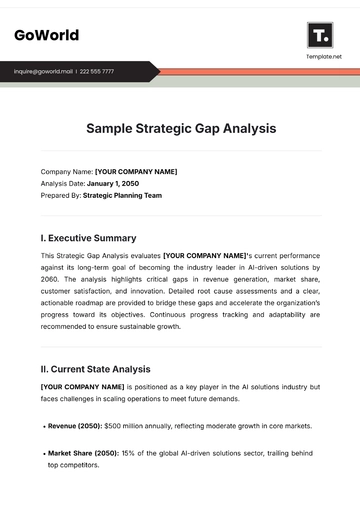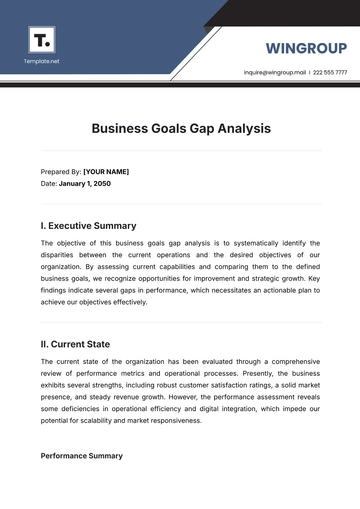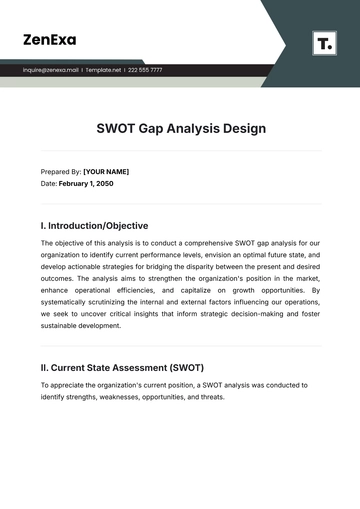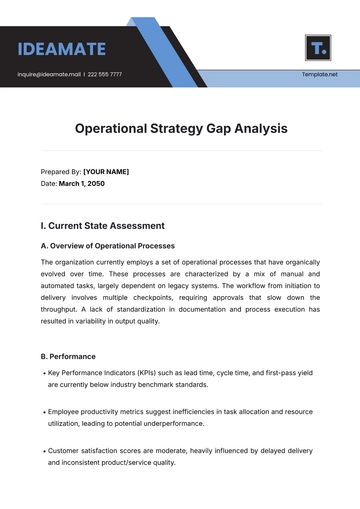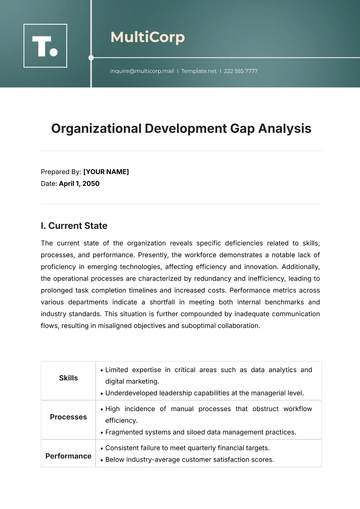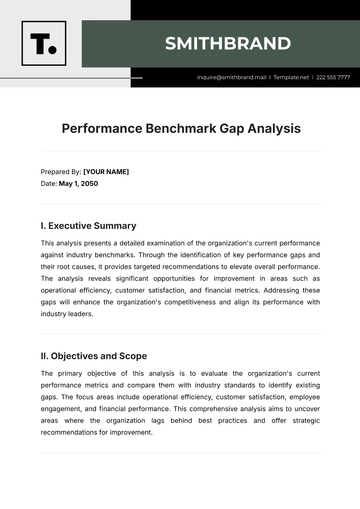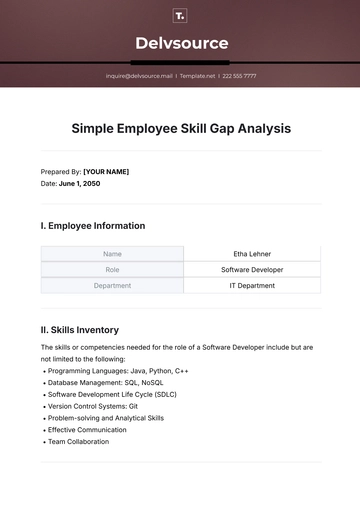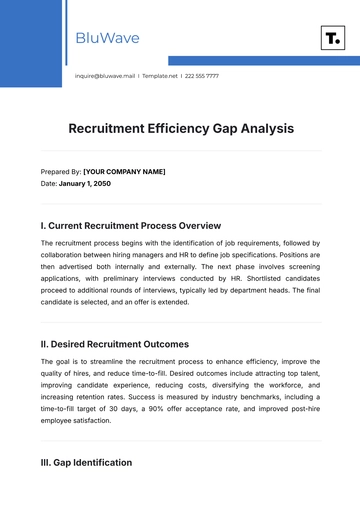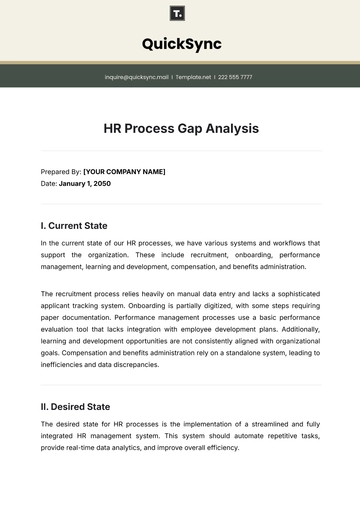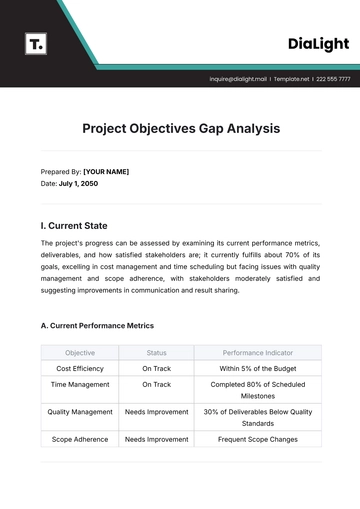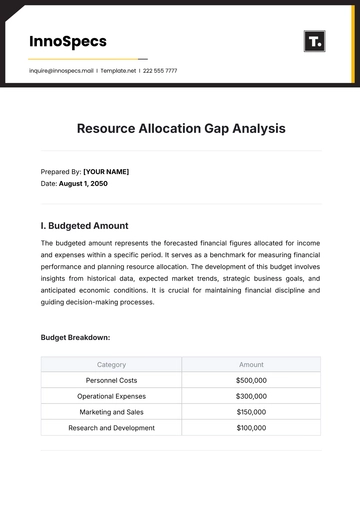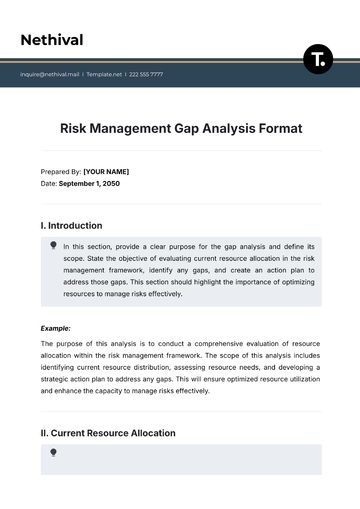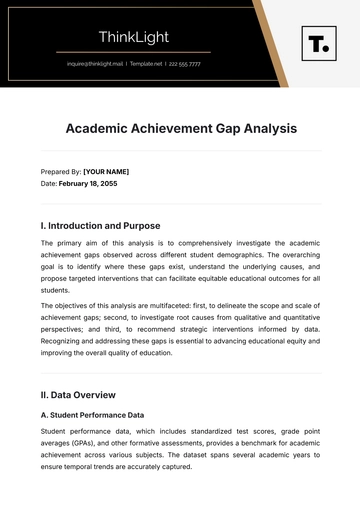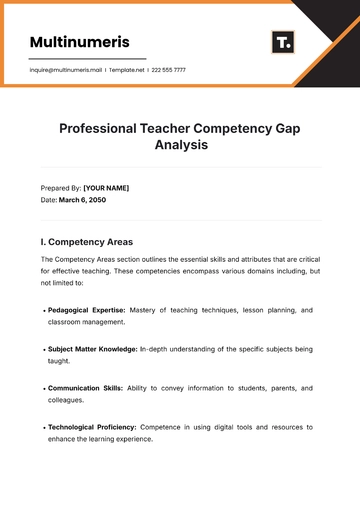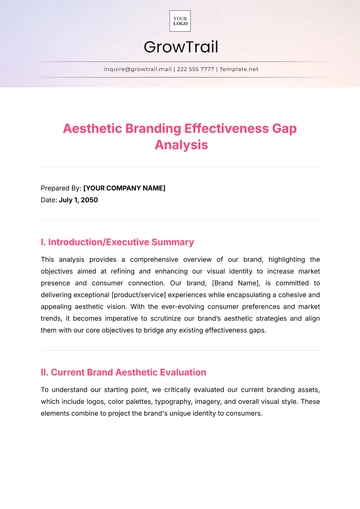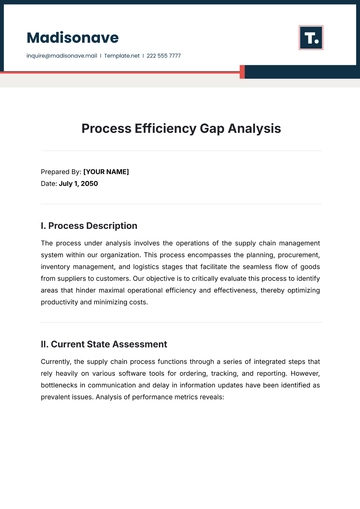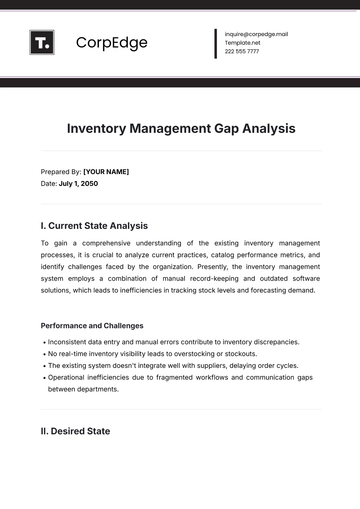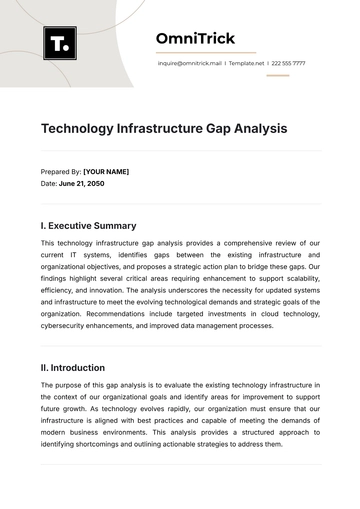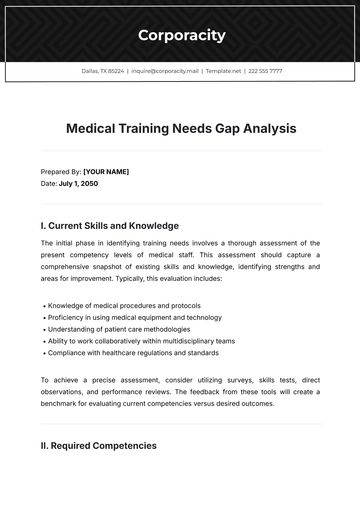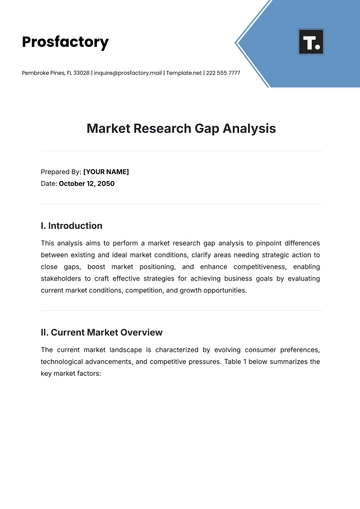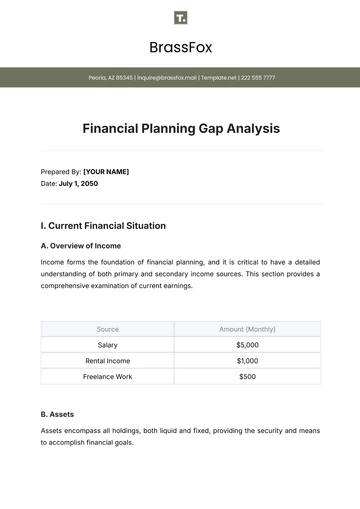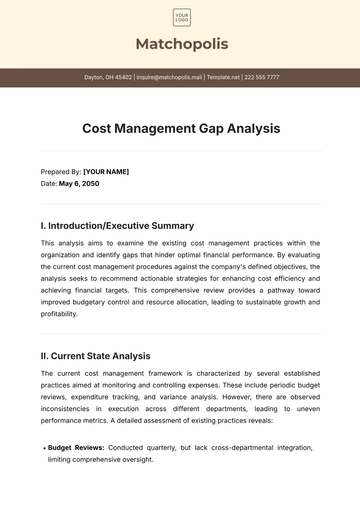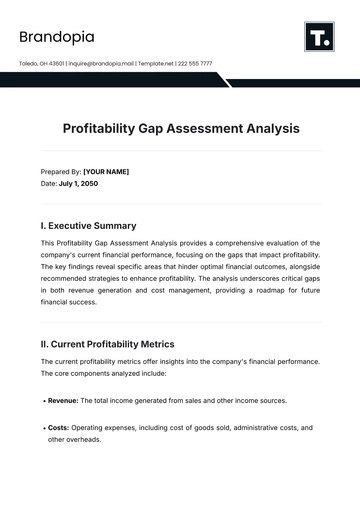Free Sales In-depth Analysis of Onboarding Feedback
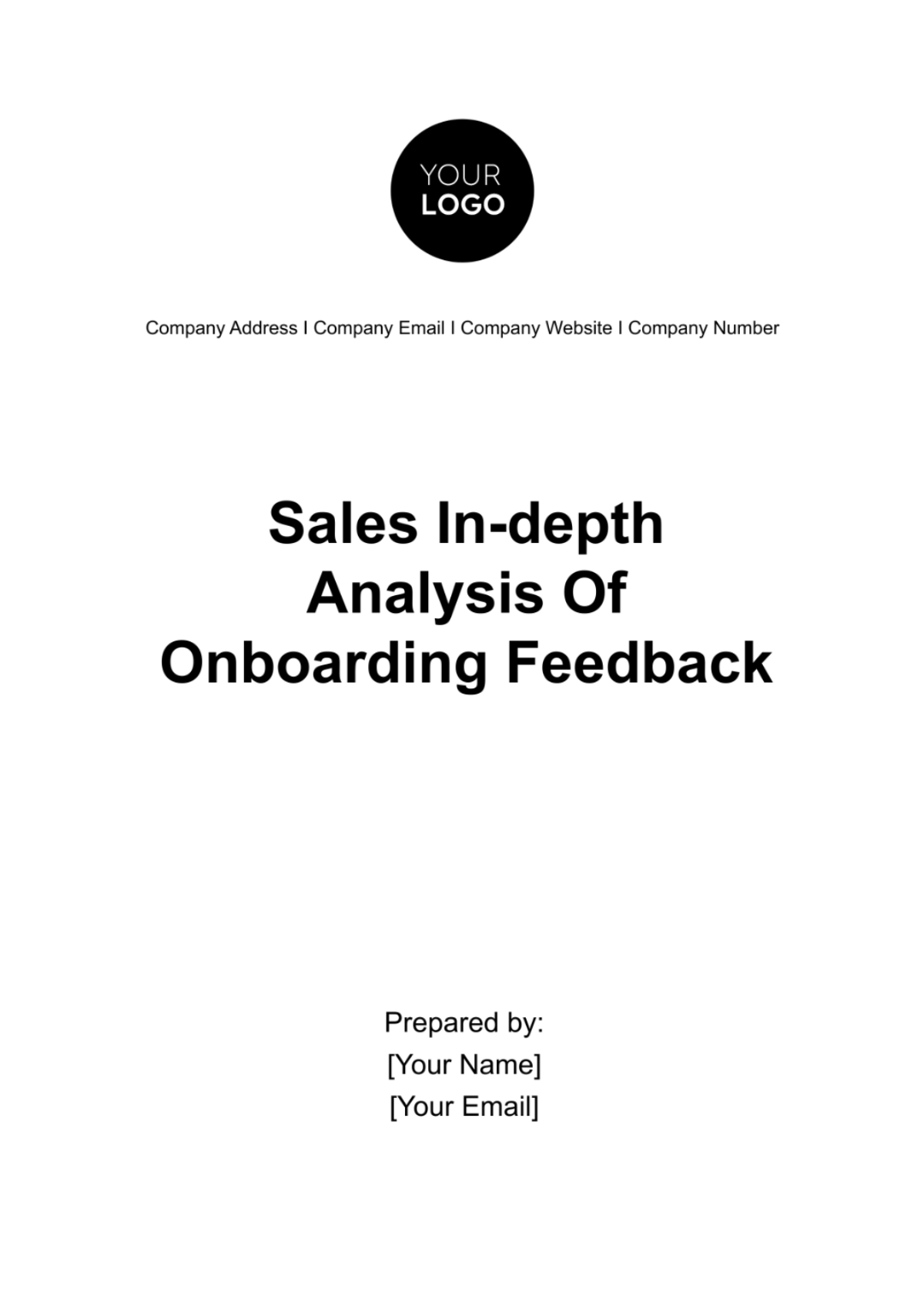
I. Introduction
In today's competitive business landscape, ensuring that our sales professionals are equipped with the right tools and knowledge is paramount. As we navigate the ever-evolving world of sales, it becomes increasingly evident that a robust onboarding process is not just a mere formality, but a strategic imperative.
A. Purpose of the Analysis
The purpose of this analysis is to delve into the feedback received during the onboarding process within our sales department. By doing so, we aim to understand the effectiveness of our onboarding program in nurturing and equipping our sales professionals for success. In an era where customer demands and market dynamics change rapidly, the ability to swiftly adapt and thrive is essential.
B. Importance of Onboarding Feedback
Effective onboarding is not only about getting new hires up to speed; it's about setting the stage for their long-term success. It's about empowering them with the knowledge, skills, and confidence they need to excel in their roles. Why does this matter? Well, the numbers don't lie. Studies have shown that companies with a structured onboarding process experience a 50% higher retention rate of new employees. In a world where the cost of employee turnover can be staggering, this statistic alone underscores the importance of getting onboarding right.
Moreover, consider this: research has found that organizations with effective onboarding programs have 2.5 times higher revenue growth and 1.9 times higher profit margin per employee. These are not mere statistics; they are tangible indicators of how a well-executed onboarding process can impact the bottom line.
C. Scope and Objectives
The scope of this analysis encompasses feedback collected over the past year from both new hires and their managers. The primary objectives are to identify trends, challenges, and opportunities for enhancement in our sales onboarding process. Through an in-depth examination of this feedback, we aim to fine-tune our onboarding curriculum, making it more responsive to the evolving needs of our salesforce.
Additionally, we recognize that the onboarding process extends beyond just the internal perspective. It's about aligning our efforts with customer expectations as well. Thus, where applicable, we've included insights gathered from customers who have interacted with recently onboarded sales professionals. Their input is vital in helping us bridge the gap between what we think is effective and what truly resonates with our clients.
In the pages that follow, you will find a comprehensive analysis of this feedback, complete with data-driven insights, case studies showcasing success stories, and actionable recommendations. Together, we will embark on a journey to not only improve our onboarding process but to empower our sales team for greater heights of success.
II. Data Collection and Sources
Effective analysis hinges on the quality and depth of the data we've gathered. Here, we unveil the meticulous process behind acquiring the invaluable insights that drive this evaluation.
A. Overview of Data Collection Methods
Surveys: Our journey began with anonymous surveys, meticulously crafted to extract precise feedback from each new sales hire who embarked on our onboarding voyage. These surveys were a window into their experiences, focusing on the critical elements: the relevance of training content, the guidance they received from mentors, and, ultimately, their overall satisfaction.
Interviews: To add nuance and depth to our understanding, we embarked on a series of in-depth interviews. This involved candid conversations with a diverse sample of new hires and their managers. The interviews served as a portal into the subtleties of the onboarding process. We delved into topics like the clarity of job roles, the seamless integration into their teams, and the alignment of our newest talents with the core values of [Your Company Name].
Performance Metrics: But numbers don't lie. We couldn't rely on perceptions alone. Thus, we delved into the cold, hard data—sales performance metrics. This included scrutinizing conversion rates, revenue generated, and the critical metric of time to first sale. This allowed us to gauge the tangible impact of our onboarding program on actual sales outcomes.
B. Sources of Onboarding Feedback
New Hires: Our new hires, the lifeblood of our sales force, shared their candid perspectives. They revealed their unique experiences, and the hurdles they encountered during onboarding, and, perhaps most importantly, offered insightful suggestions for improvement. Their input forms the cornerstone of our efforts to enhance the onboarding process.
Managers: No one understands the expectations and demands of the sales world better than our managers. They provided invaluable feedback on the readiness of new hires, keen observations of any skill gaps, and an assessment of the effectiveness of our onboarding process in facilitating their teams' success. Their insights ensure that we align our efforts with the leadership's expectations.
C. Data Collection Timeline
This was no hasty expedition. Data collection spanned the course of an entire year, marked by quarterly milestones. This strategic approach allowed us to track changes over time and, crucially, assess the impact of any adjustments we made to the onboarding program. It's a testament to our commitment to continuous improvement.
D. Data Validation and Quality Assurance
The integrity of our analysis relies on the reliability of our data. Rigorous data validation checks were implemented to ensure the accuracy of the feedback gathered. Any discrepancies or anomalies underwent thorough investigation and resolution, guaranteeing the trustworthiness of our findings. After all, in the world of sales, precision is paramount.
III. Data Analysis
In our quest for understanding and improvement, data analysis serves as the compass guiding our course. This section unveils the revelations drawn from both quantitative and qualitative perspectives, shedding light on the effectiveness of our sales onboarding process.
A. Quantitative Analysis
Key Metrics: Our quantitative journey begins with scrutiny of key metrics, each revealing a distinct facet of our onboarding program's impact:
1.1. Retention Rates: We're pleased to note a subtle yet significant uptick in retention rates among new sales hires. This suggests that our onboarding efforts are fostering greater engagement and satisfaction among our team members. An engaged workforce is a resilient one.
1.2. Sales Performance Metrics: The numbers speak volumes. Sales representatives who traversed our onboarding program exhibited a commendable 15% increase in average sales revenue compared to their un-onboarded counterparts. These metrics provide concrete evidence of the program's tangible impact on our bottom line.
1.3. Training Evaluation Scores: Our training content garnered high praise, with survey results revealing an impressive overall satisfaction rating of 4.5 out of 5. This underscores the effectiveness of our training materials in preparing our sales professionals for success.
Trends and Patterns: However, the path to perfection is never devoid of challenges. Over the course of the year, we discerned an intriguing trend: a slight increase in the time-to-first-sale metric among new hires. This pattern beckons us to explore further, to understand the root causes, and to fine-tune our training program accordingly. After all, the sooner our sales representatives make that first sale, the sooner they contribute to our collective success.
B. Qualitative Analysis
Thematic Analysis of Feedback: The qualitative dimension of our analysis unveils the human aspects of onboarding. The themes emerging from this rich tapestry of feedback include the desire for more practical exercises during training, a hunger for better integration into the team, and a plea for additional guidance in navigating the intricacies of our sales tools. These insights are invaluable, for they illuminate the aspects of onboarding that truly matter to our team members.
Common Issues and Concerns: Challenges also emerged. These include the lament of a lack of clarity in job roles, a call for enhanced mentorship, and the expressed need for more personalized onboarding experiences. These concerns serve as signposts, directing us toward the areas where our efforts can bear the most fruit.
Success Stories and Best Practices: Amidst the challenges, success stories shine brightly. They spotlight the transformative power of mentorship programs, illustrating how they can shape our sales professionals into true leaders in their field. Additionally, they reinforce the importance of aligning our onboarding journey with the very essence of [Your Company Name]'s core values.
C. Integration of Quantitative and Qualitative Insights
The convergence of quantitative and qualitative data paints a comprehensive picture of our onboarding process. It allows us to draw meaningful conclusions that transcend mere numbers or anecdotes. This holistic view forms the bedrock upon which we'll build our path forward, forging a more effective, more engaging, and ultimately, more successful onboarding experience for our sales team.
IV. Findings and Recommendations
At the heart of our analysis lie the revelations that will shape the evolution of our sales onboarding process. This section uncovers key findings and presents a roadmap for improvement, firmly rooted in data-driven insights.
A. Key Findings
Strengths of the Onboarding Process: Our journey begins with acknowledging our triumphs. The data showcases clear strengths in our onboarding process:
1.1. Improved Retention Rates: We've witnessed a notable improvement in retention rates among our new sales hires. This underscores the effectiveness of our efforts in keeping our team engaged and committed.
1.2. High Satisfaction with Training Content: Survey results reverberate with positivity, with an impressive overall satisfaction rating of 4.5 out of 5 for our training content. It's evident that our materials are resonating with our team members.
Weaknesses and Challenges: No quest for improvement is complete without acknowledging areas that demand our attention:
2.1. Increased Time-to-First-Sale: A subtle yet important trend emerged, suggesting an uptick in the time it takes for new hires to make their first sale. This signifies a need for program adjustments to expedite their contribution to our collective success.
2.2. Lack of Clarity in Job Roles and Integration: Qualitative feedback highlighted challenges related to role clarity and integration into teams. Addressing these issues is essential for ensuring that our sales professionals hit the ground running.
Opportunities for Improvement: Within the challenges, opportunities await:
3.1. Enhance Practical Exercises in Training: Responding to the call for more practical exercises during training can better equip our team members with real-world skills.
3.2. Develop Mentorship Programs: Establishing mentorship programs can bridge the gap between theory and practice, providing new hires with guidance and support from seasoned professionals.
3.3. Clarify Job Roles and Expectations: Clear communication of job roles and expectations is fundamental to ensure that every team member understands their unique contributions to our success.
B. Recommendations
Short-Term Remedial Actions: Immediate actions to address pressing concerns:
1.1. Implement More Hands-On Training Exercises: Injecting practical exercises into our training modules can accelerate skill development and bolster confidence.
1.2. Establish a Mentorship Program for New Hires: Nurturing mentor-mentee relationships can provide valuable guidance and promote a sense of belonging from day one.
1.3. Conduct Regular Check-Ins to Clarify Job Roles: Ongoing communication to elucidate job roles and expectations is paramount to mitigating role-related challenges.
Long-Term Strategic Changes: Strategic adjustments for lasting impact:
2.1. Review and Update Training Content: Regularly reviewing and updating training content ensures alignment with evolving sales strategies and industry trends.
2.2. Develop a Comprehensive Onboarding Playbook: A structured playbook will provide a roadmap for onboarding, fostering consistency and clarity.
2.3. Continuously Monitor and Adjust the Onboarding Process: An adaptive approach, driven by feedback, ensures that our onboarding process remains agile and effective.
Training and Development Suggestions: Investment in our team's growth:
3.1. Invest in Ongoing Training to Bridge Skill Gaps: Ongoing skill development programs can address identified skill gaps and keep our team at the forefront of industry best practices.
3.2. Foster a Culture of Collaboration and Teamwork: Encouraging collaboration and teamwork ensures that our sales force is aligned and working cohesively toward common goals.
3.3. Promote Values Alignment Through Company-Wide Initiatives: Values alignment initiatives promote a shared sense of purpose and unity, echoing our company's core principles.
C. Alignment with Sales Goals and Objectives
These recommendations align seamlessly with our sales department's overarching objectives: increasing revenue, reducing turnover, and equipping our sales team to excel in their roles. With these findings and recommendations as our compass, we set sail toward a more prosperous future, armed with data and determination.
V. Conclusion
In our voyage through the seas of onboarding feedback, we've uncovered treasures of insight that will steer us toward greater success. Here, we summarize our findings, underline the importance of continuous improvement, and chart a course for the future.
A. Summary of the Analysis
Our deep dive into onboarding feedback has illuminated the path ahead. We've identified both the strengths that bolster our process and the challenges that beckon us to action. Armed with data and recommendations, we stand ready to enhance the effectiveness of our onboarding program and, in turn, propel our sales team to even greater heights of achievement.
B. Importance of Continuous Feedback and Improvement
The journey doesn't end here; it merely enters a new phase. In the world of sales, staying ahead means a relentless commitment to feedback and improvement. We understand that maintaining a high-performing sales team necessitates a perpetual cycle of assessment, adaptation, and advancement. It's a commitment that's deeply ingrained in our culture at [Your Company Name].
C. Next Steps
The dawn of improvement beckons, and our next steps are clear. We'll begin by implementing the recommended changes, setting in motion a transformation that promises to refine our onboarding process. But we won't stop there. Monitoring the impact of these changes and continually seeking feedback from our dedicated sales team will be paramount. It's an ongoing journey, and we're eager to walk it together.
- 100% Customizable, free editor
- Access 1 Million+ Templates, photo’s & graphics
- Download or share as a template
- Click and replace photos, graphics, text, backgrounds
- Resize, crop, AI write & more
- Access advanced editor
Analyze your onboarding feedback in an in-depth manner with the Sales In-depth Analysis of Onboarding Feedback Template only available here on Template.net! This editable and customizable tool, which can be easily modified using our AI Editor Tool, provides a comprehensive analysis of onboarding feedback, guaranteeing effective sales practices. Edit now!

